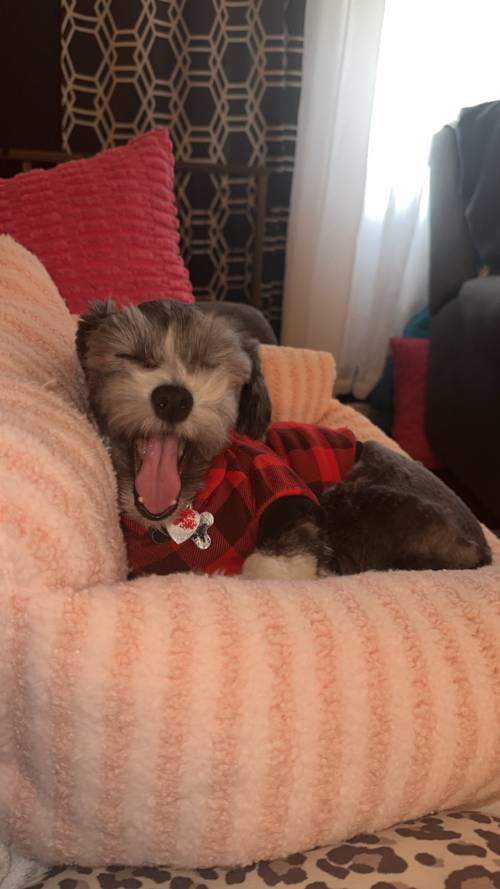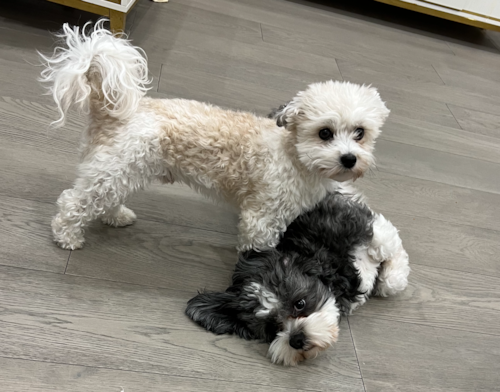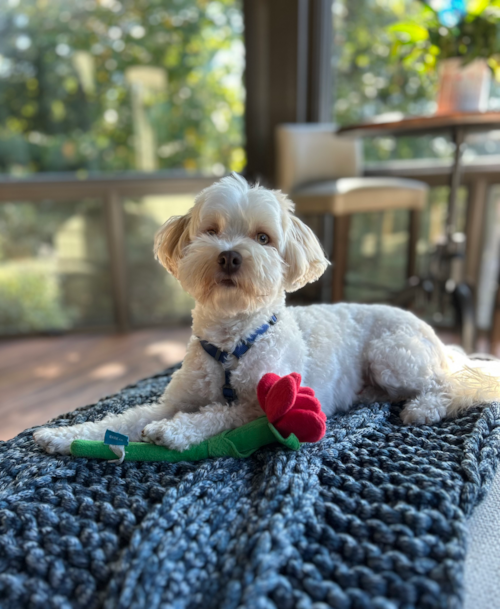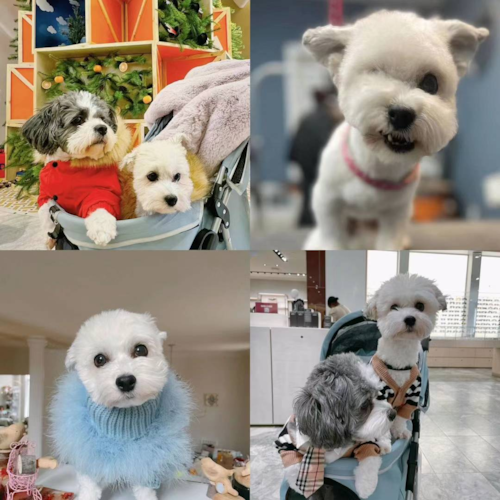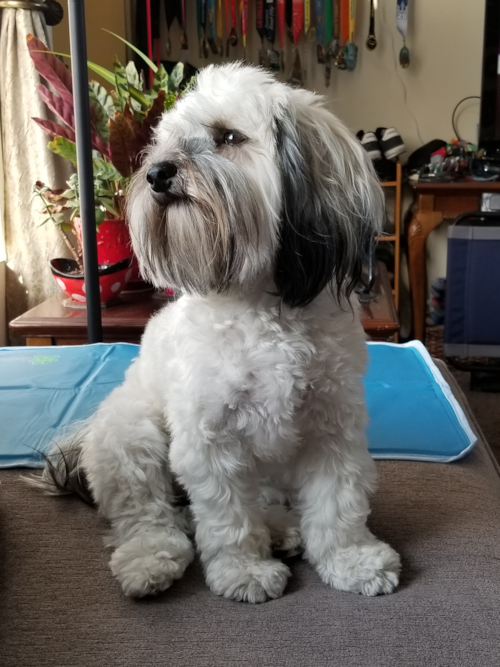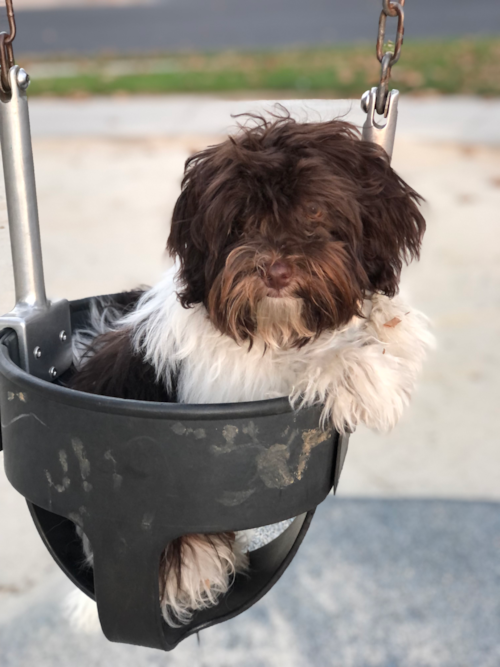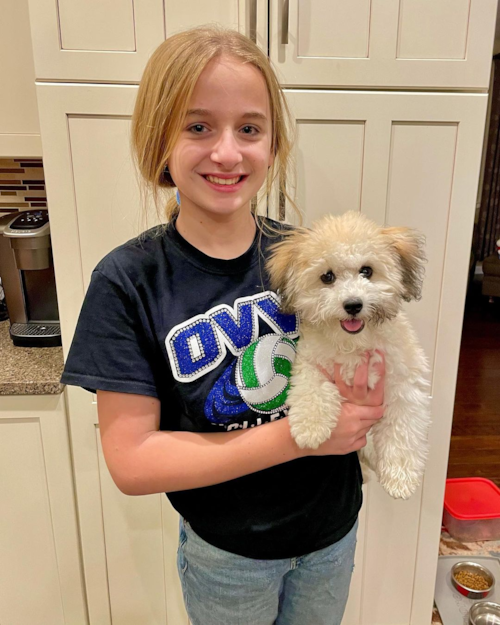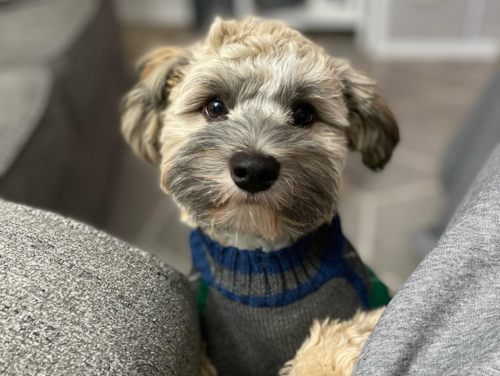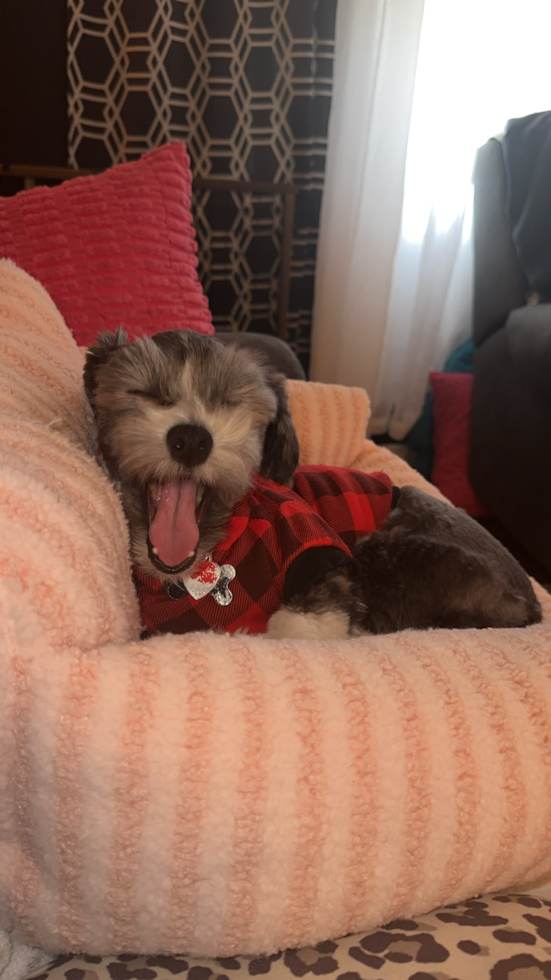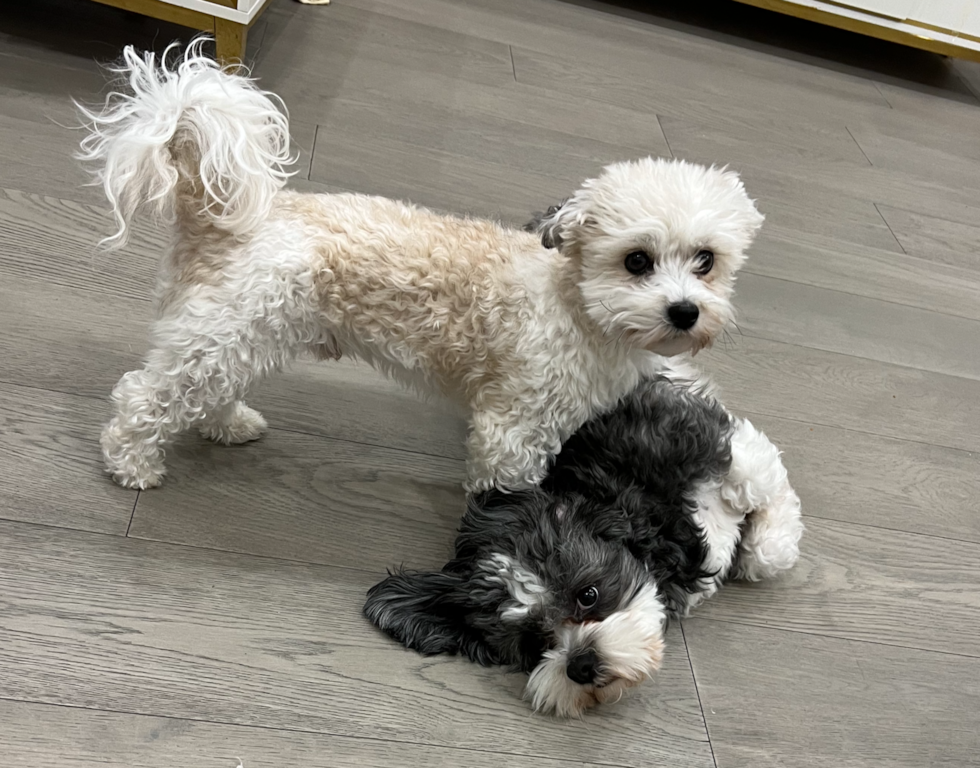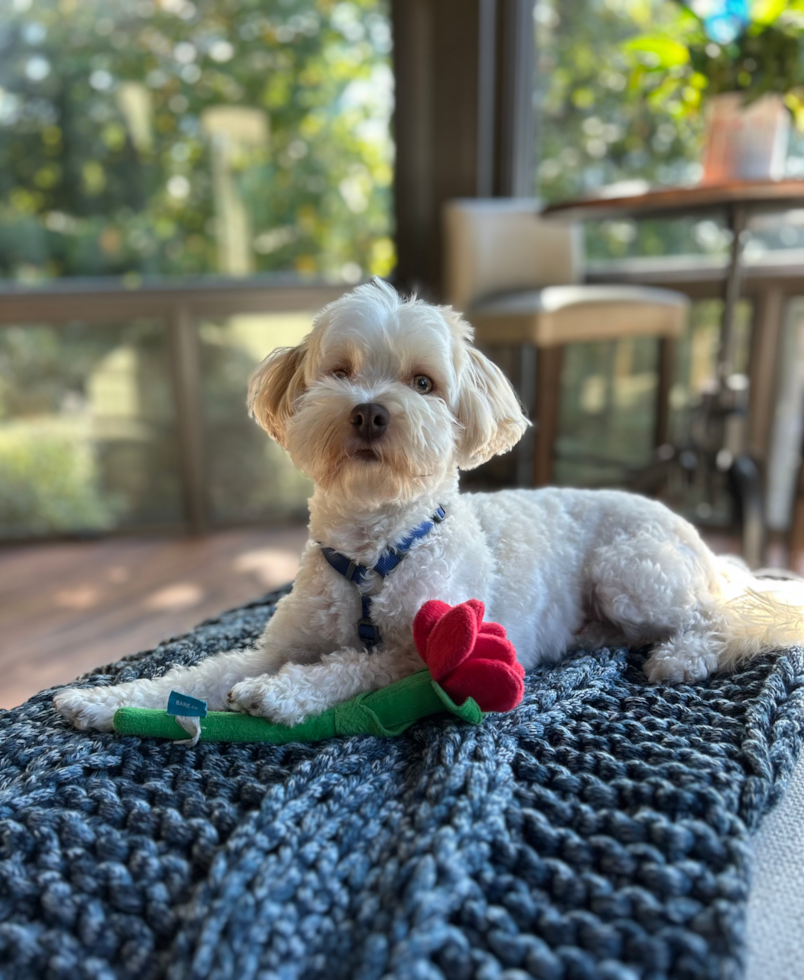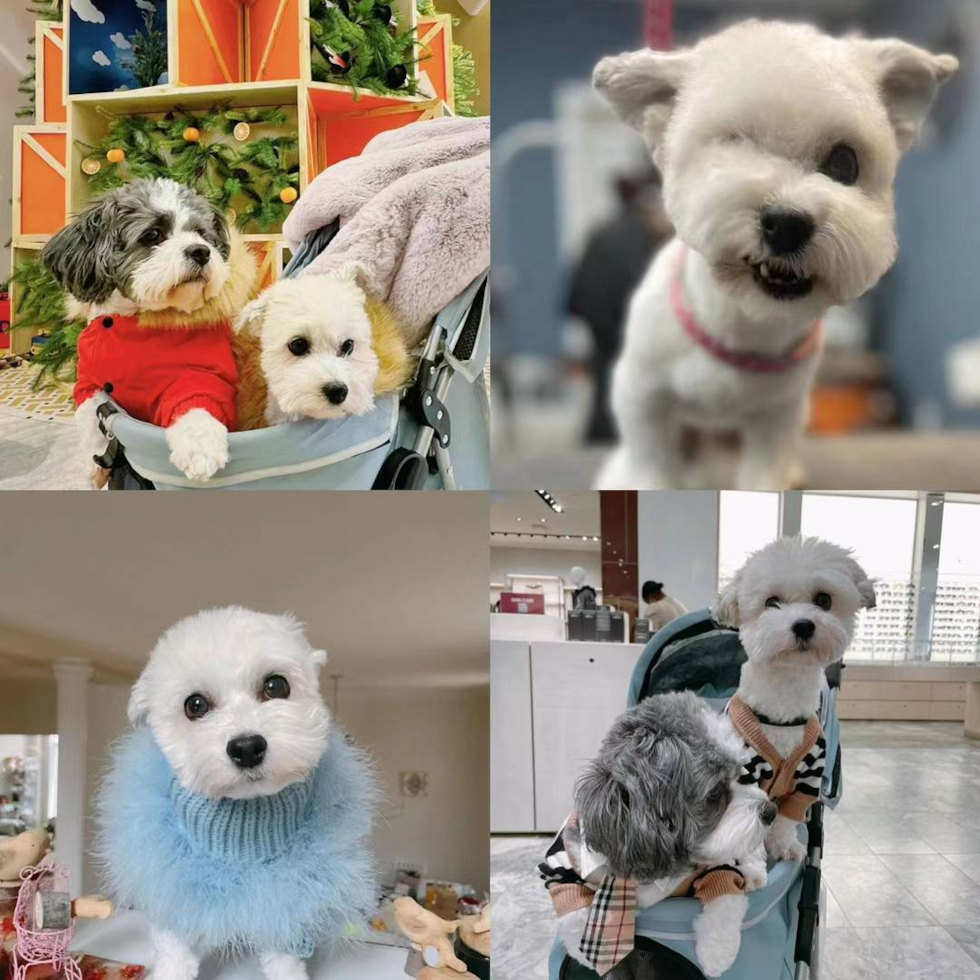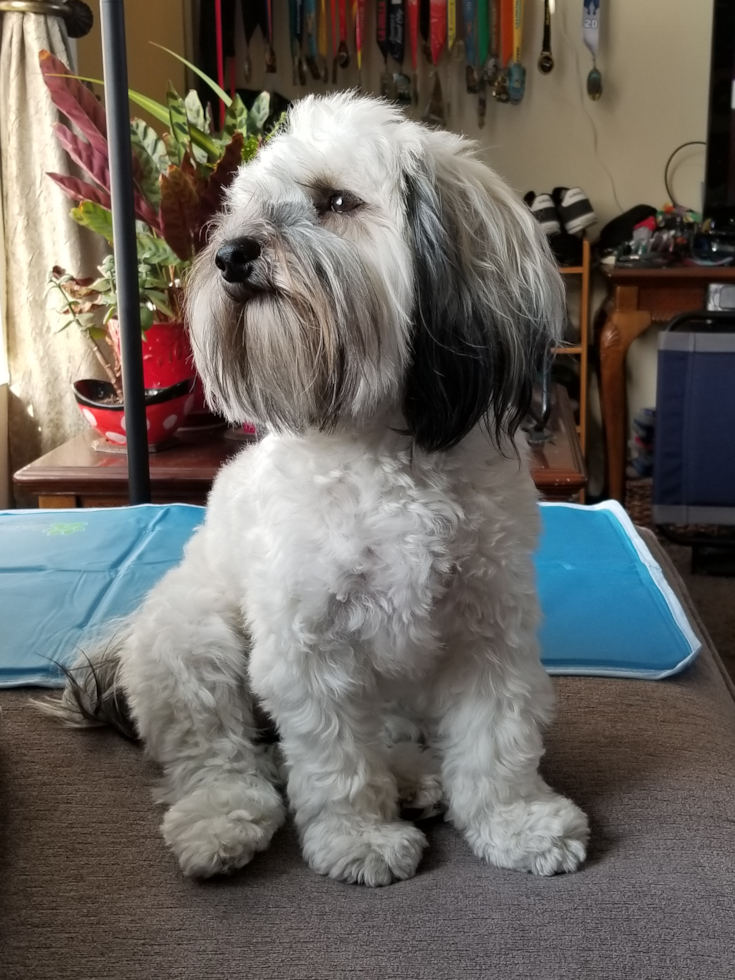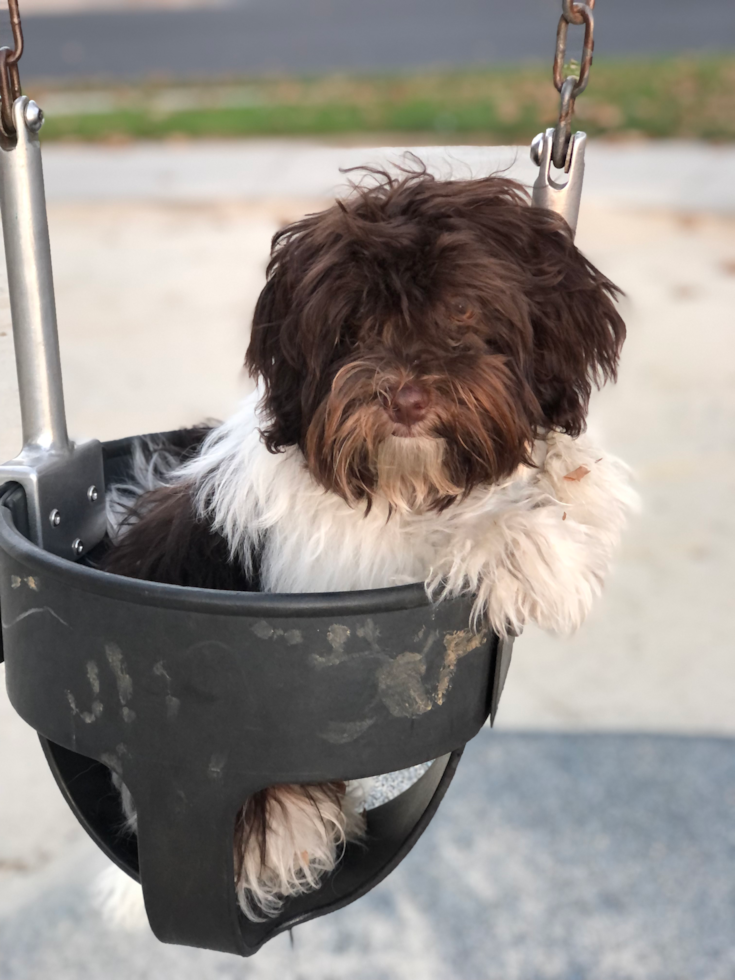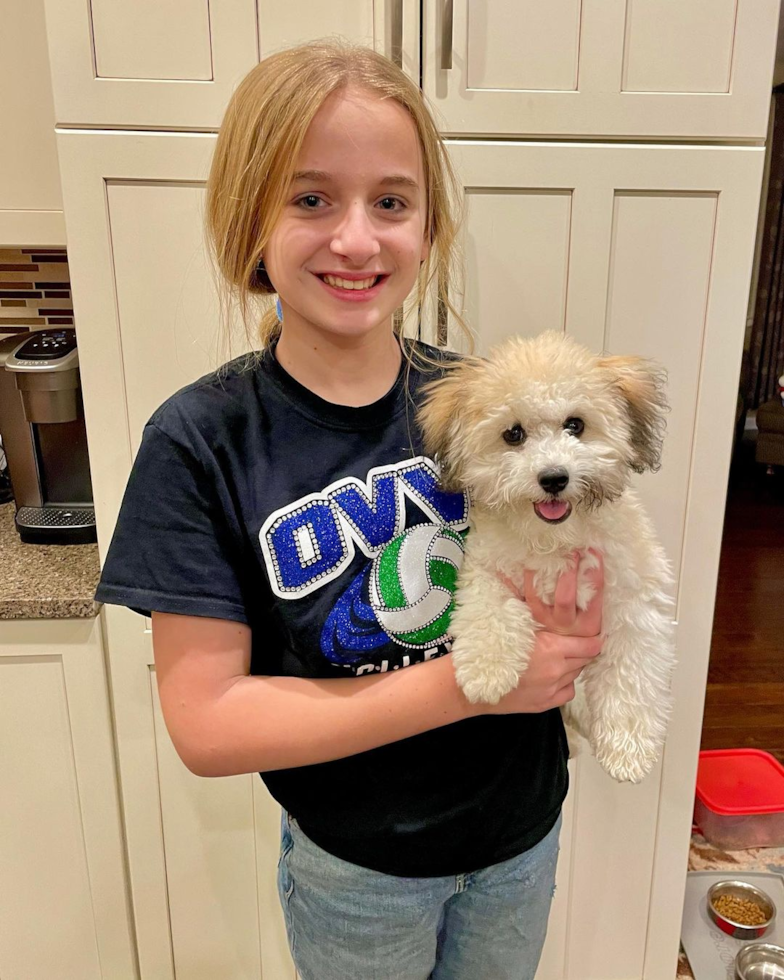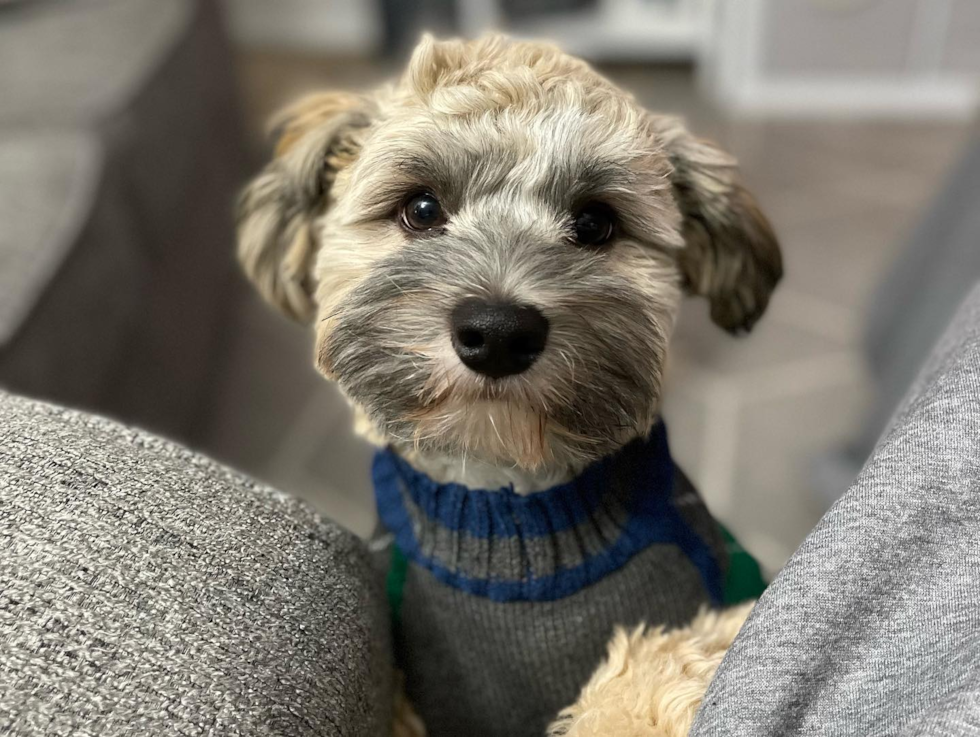Havanese Breed Information

Known as the national dog of Cuba and famous worldwide for their friendly demeanor, beautiful coat, and loving nature, Havanese dogs truly are a breed like no other. Their charming personalities and adaptable nature make them perfect companions, while their small size makes them suitable for both apartment living and larger homes. But, as any Havanese owner will tell you, it's the love and warmth that this breed brings into their lives that truly makes them stand out.
Havanese dogs are part of the Bichon family of breeds, boasting a lineage rich in history and companionship. With their distinct, silky coat, expressive eyes, and lively temperament, they easily steal the hearts of everyone they meet. They're known for being incredibly social and get along well with people of all ages, including children. They also typically get along well with other pets.
Despite their small size, Havanese dogs are sturdy and not as fragile as some other small breeds. They love to play and can be quite active, though they're not as hyperactive as some breeds and can adapt well to their owner's lifestyle.
Characteristics
- Social Butterfly: The Havanese are the life of the party and make friends wherever they go. They're naturally sociable dogs that enjoy the company of humans and other animals alike. Whether it's a family gathering or a visit to the park, your Havanese is sure to win over hearts with their charming personality.
- Intelligent and Agile: With a keen intellect and an agile body, the Havanese can quickly master new commands and tricks. Their mental agility also means they need mental stimulation in their daily life to prevent boredom and the development of destructive behaviors.
- Vocal Communicator: Havanese dogs are known for their vocal nature. They don’t shy away from expressing their feelings, whether they're happy, excited, or simply wanting your attention. However, proper training can help manage any excessive barking tendencies.
- Compact and Sturdy: Despite their small size, Havanese dogs have sturdy, well-built frames. They're compact enough to comfortably live in apartments but also robust enough to join in family activities and outdoor adventures.
- Devoted Companion: Loyalty is in a Havanese's DNA. They form strong bonds with their human family and can suffer from separation anxiety if left alone for long periods. Havanese are often called "velcro dogs" because they always want to stick close to their human's side.
- Adaptable: Whether it's adapting to various living environments or different weather conditions, the Havanese is a versatile breed. They're just as happy living in an urban apartment as they are in a suburban or rural home.
- Vibrant Coat: One of the distinguishing features of the Havanese is their long, silky coat. It can come in various colors, patterns, and lengths, providing a unique look for each individual dog.
- Affectionate and Good-natured: The Havanese are brimming with love and affection for their human family. They're good-natured dogs that spread joy and positivity wherever they go.
- Active but Not Hyperactive: While the Havanese are an active breed, they're not hyperactive. A few short walks coupled with some playtime each day are usually enough to keep these dogs physically and mentally stimulated.
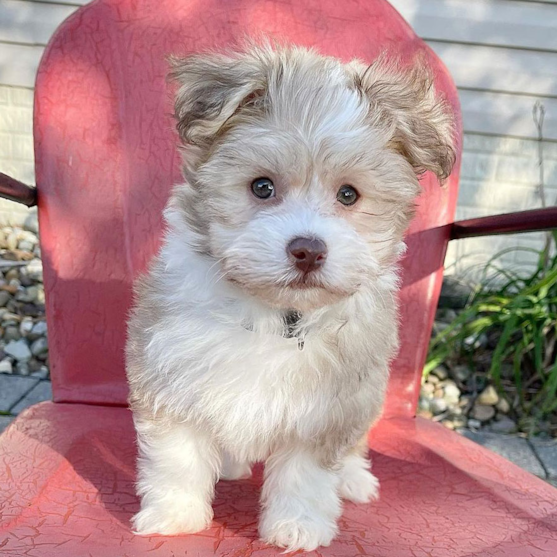
Appearance
The Havanese is a small but sturdy breed that immediately attracts attention with its distinct appearance. They are often recognized by their silky, wavy to curly fur that can grow long and is incredibly soft to the touch. The length of their coat, paired with the natural waves, gives them a somewhat tousled but adorable appearance.
These charming dogs are often likened to small teddy bears because of their fluffy coats and expressive eyes.
Havanese colors are varied and can range from pure white to cream, champagne, gold, black, blue, silver, chocolate, or any combination of these. A particularly fascinating aspect about their color is that it can change over time. It is not uncommon for a Havanese puppy's coat to darken or lighten as they mature, adding an element of surprise as they grow.
The Havanese carries itself with a light-footed and slightly springy gait, reflecting the breed's vivacious spirit. The breed typically stands at 8.5 to 11.5 inches tall, weighing between 7 to 13 pounds, making it a perfect companion that can adapt to living in smaller spaces like apartments.
One of their most distinctive features is their tail, which is covered with long, silky hair and carried arched over the back. Their eyes, dark brown and almond-shaped, radiate warmth and intelligence, adding to their irresistibly endearing face. The ears, droopy and set high, are also covered with long hair that beautifully frames their face.
Their body is slightly longer than tall, with a sturdy frame hidden beneath the layers of their beautiful coat. Havanese dogs have slightly rounded, short-muzzled heads with a distinct stop, which adds to their overall adorable look. This, coupled with their agile and quick movements, creates a picture of a lively, playful, and endlessly charming dog.
Photos
Temperament
The Havanese are renowned for their affectionate and friendly nature, a trait that makes them beloved family pets. They are incredibly sociable animals and thrive in environments where they can interact and play with their human companions. Unlike some other small breeds, Havanese dogs are not typically yappy or overly demanding. Instead, they are known for their steady temperament and easygoing nature. They form strong bonds with their families and often follow their owners from room to room, always wanting to be part of the action.
This breed is especially good with children and other pets. Their patient and gentle demeanor makes them an excellent choice for families with children, as they are unlikely to become agitated or snappy. Similarly, their sociable nature means they usually get along well with other pets, whether they are fellow dogs or different species altogether. However, as with any breed, it's always essential to supervise interactions between dogs and young children to ensure safety for both.
The Havanese are also known for their intelligence and eagerness to please, which contributes to their generally good behavior. This breed is quite responsive to their owners, making them relatively easy to train. However, it's worth noting that, like many small breeds, the Havanese can sometimes be a little stubborn. Consistent, positive reinforcement training methods are often the most effective with this breed.
Due to their social nature, Havanese dogs do not do well when left alone for extended periods. They may develop separation anxiety, leading to destructive behaviors and excessive barking. To keep a Havanese happy, owners should ensure that they are rarely left alone and have plenty of stimulation throughout the day.
Their warm and loving temperament, combined with their intelligence and adaptability, make Havanese dogs ideal pets for a wide range of households, from singles and couples to families with children. They're excellent companions who will fill your home with joy, warmth, and an abundance of tail-wagging.
Insights
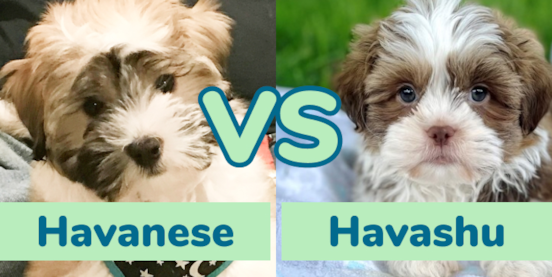
Havanese vs Havashu Comparison
Lively, happy, and up for games and cuddles at any hour of the day, the Havanese and Havashu are driven to bring joy home. Aside from being as cute can be, these lovely pooches are intelligent, loyal, friendly, and playful. They light up rooms with their funny antics and cause giggles with their perfect little dog stunts. Choosing between the two is no easy task as both of these dogs make quite remarkable pets. Keep reading and you might just have to take them both home.
A puppy’s...

Discover the Top 10 Breeds of Puppies that Stay Small and Capture Hearts
If you've ever found yourself captivated by the charm of a tiny puppy, you're not alone. Many of us are enchanted by the idea of puppies that stay small forever and don't shed. These petite pooches offer all the love and companionship of a larger dog but in a more manageable size.
If you're on the hunt for one of these adorable little companions, look no further than Premier Pups. We specialize in puppies that stay small for...
Care
Grooming
When it comes to the Havanese, their luscious, flowing coats require a fair bit of maintenance. Their double coat is very soft and light in texture, with the topcoat slightly heavier than the undercoat. Though these dogs are considered hypoallergenic, meaning they are less likely to trigger allergies, the long, silky hair needs regular grooming to keep it healthy and free from mats.
Brushing is a daily task for Havanese owners, as it not only removes loose hair but also helps distribute natural oils throughout the coat. The use of a high-quality slicker brush and a comb with both wide and narrow teeth are recommended. Owners should pay close attention to areas where tangles often form, such as behind the ears, the armpits, and the groin.
Bathing should be done once every 4 to 6 weeks, using a mild dog shampoo to avoid stripping the coat of its natural oils. Using a conditioner post-shampoo is advisable to maintain the soft and silky texture of the coat. Care should be taken to ensure that their ears are dry post-bath to prevent ear infections.
Regular checking of their eyes is important, as the breed is prone to tear staining. Gentle wiping with a soft, damp cloth can help keep their eyes clean. Teeth should be brushed regularly, ideally daily, with a vet-approved toothpaste to ensure good oral health and avoid any dental issues.
While the grooming needs of a Havanese may seem demanding, they are manageable, especially when you build them into your regular routine. If the luxurious, flowing coat becomes too much, many owners opt for what's called a "puppy cut," where the coat is clipped short all over. This dramatically reduces the time spent grooming, but regular brushing is still required to prevent matting and to keep the coat looking its best.
Despite the shorter length, frequent grooming still contributes to the overall health and happiness of your Havanese, ensuring their skin remains healthy and their coat stays shiny and vibrant.
Their nails should also not be overlooked. Regular clipping is necessary to prevent overgrowth and splitting, which can be painful and lead to problems walking. Using a dog nail trimmer or grinder, aim to trim your Havanese's nails every few weeks.
Even though grooming a Havanese can be a time-consuming process, it's also an excellent opportunity for bonding with your furry friend. Many dogs come to enjoy this special attention, and it's a great way for owners to relax and de-stress as well.
Remember, keeping up with your Havanese's grooming needs is an integral part of their care routine. Not only does it keep them looking their best, but it also contributes to their overall health and well-being. When their coat is free from tangles and their nails are nicely trimmed, a Havanese is a happy and comfortable dog.
Regular grooming also allows you to check for any unusual skin issues or parasites, ensuring your furry friend stays in top-notch condition.
Regular grooming is essential for the Havanese breed. Learn more about grooming practices in our blog How Often Should You Bathe Your Dog Guide.
Dental care is crucial for Havanese dogs. For tips on maintaining your dog's oral health, read our blog Brushing Puppy Teeth Guide.
Exercise Needs
While Havanese may not be as high-energy as some breeds, they still require daily exercise to keep them physically fit and mentally stimulated. A well-exercised Havanese is a happier, healthier dog, and you'll find their endearing personality truly shines when they're getting regular activity.
Daily walks are ideal for the Havanese, as these excursions not only provide physical exercise but mental stimulation as well. They adore exploring their surroundings, sniffing out new scents, and enjoying the sights around them. This sensory engagement goes a long way in keeping them mentally sharp. Two short walks a day, along with some playtime, usually suffices for this little dog.
Havanese are also quite playful and thrive when they get plenty of time to engage in games. Fetch, tug-of-war, and puzzle toys can keep them entertained for hours. Even a simple game of chase in the backyard can be a fantastic way to expend some of their energy.
It's important to remember that exercise isn't just about physical activity – it's also about bonding. Time spent together during a walk or play session strengthens the bond between you and your Havanese, building a deep, lasting connection. Your furry friend will relish this time spent with you, so be sure to make it a regular part of your routine.
Havanese are adaptable and can live happily both in large homes with yards and in smaller apartments, as long as their exercise needs are met. While they may not need the same level of activity as larger breeds, they are still agile and quick, enjoying a good run in a secure area. They are excellent jumpers and climbers, which is a trait to keep in mind when setting up a secure play space.
Given their intelligent nature, Havanese love activities that engage their minds. Teaching them new tricks and commands can be an enjoyable way to provide mental stimulation and physical activity. They are usually eager to learn and take well to positive reinforcement training methods, turning these sessions into a fun game.
One thing to bear in mind is that, although the Havanese enjoy a good play session, they can be prone to overheating. Because of their thick double coat, they can become warm quickly, especially during the summer months. Always ensure they have access to fresh water and shade and avoid exercising them during the hottest part of the day.
As puppies, Havanese have a lot of energy and can be quite rambunctious. It's important to provide them with plenty of toys to chew on and play with. As they grow older, their energy levels will decrease somewhat, but they will still enjoy a daily walk and playtime.
Health
While Havanese dogs are generally healthy and resilient, like all breeds, they can be predisposed to certain health conditions. It's important to be aware of these potential issues so you can seek early intervention if necessary. This is not a guarantee that every Havanese will experience these health problems, but it is a guide to what conditions might crop up during your pet's life.
Havanese dogs can suffer from allergies, ranging from food allergies to contact allergies. Symptoms may include itching, redness, and digestive problems. A vet can help you identify what your Havanese is allergic to and suggest appropriate treatment or dietary changes.
Havanese can have a condition called cataracts, where the lens of the eye becomes progressively opaque, resulting in blurred vision. While this condition is often associated with aging, it can also occur in younger dogs. Regular eye check-ups can help identify cataracts early and allow for treatment options.
Remember, reputable breeders will screen for these health conditions, providing health clearances to prove that a puppy's parents are tested and cleared for these conditions. It's crucial for future Havanese owners to ask for these health clearances to ensure you're getting a healthy puppy.
Lifespan
The Havanese breed is known for having a surprisingly long lifespan compared to other breeds of its size. These lively and robust companions often enjoy a lifespan ranging between 14 to 16 years. This longevity, however, is not by chance. Several factors contribute to this prolonged life expectancy, beginning with their genetic makeup.
Bred from a hardy lineage, the Havanese have proven themselves to be a resilient breed, able to withstand varying living conditions and lifestyles. Their genetic diversity has helped them avoid many serious genetic disorders, contributing significantly to their longevity.
One of the factors that strongly influence a Havanese's lifespan is their diet. A well-balanced diet can make a significant difference in the lifespan of your furry friend. Nutritious food, portion control, and regular feeding times not only help your Havanese maintain a healthy weight but also keep their metabolism consistent and efficient, extending their life expectancy.
Feeding a Havanese requires careful consideration of their unique dietary needs. Like all dogs, Havanese thrive on a balanced diet that provides the essential nutrients they need to maintain a healthy and active lifestyle.
However, due to their small size, they have a fast metabolism and need to eat more frequently than larger dogs. Small meals spread throughout the day can help meet their energy needs without risking weight gain. Dry dog food designed for small breeds is often a good choice, as it's formulated with the right nutrient proportions to meet their specific needs.
Portion control is crucial. Despite their active nature, overfeeding can lead to obesity, a common health issue among Havanese. Consult your vet to get precise feeding recommendations based on your dog's age, size, activity level, and overall health status.
Variety is the spice of life, and that holds for your Havanese's diet as well. Introducing a mix of high-quality commercial dog food with occasional healthy treats and natural food items can keep mealtime exciting. Items such as cooked lean meats, fish, vegetables, and fruits can be excellent additions but always check with your vet before introducing new food into your dog's diet.
Be aware that certain human foods are toxic to dogs, including chocolate, grapes, onions, and certain types of nuts. Always avoid these, and if in doubt, check with a professional.
Hydration is another essential aspect of a Havanese's feeding regimen. Always ensure your dog has access to fresh, clean water, especially during warmer months when they can quickly become dehydrated.
Remember, a healthy diet is the first step towards a long, happy life for your Havanese. Tailoring their diet to their lifestyle, age, and health will ensure they're getting the best nutrition possible.
Yet, diet alone does not define the lifespan of a Havanese. Regular exercise and mental stimulation also play a vital role in prolonging their years. Like any breed, these dogs need physical activity to stay healthy, lean, and lively. Regular walks, playtime, and interactive games can prevent obesity, one of the primary threats to their lifespan.
Even with their lengthy life expectancy, Havanese dogs are not without their health issues. Regular veterinary check-ups play a crucial role in catching potential health issues early and treating them effectively. Regular check-ups are essential in identifying potential problems such as heart diseases, liver disorders, and orthopedic issues that could shorten the lifespan of your Havanese.
Lastly, a loving and nurturing environment cannot be discounted in the equation of a Havanese's lifespan. The breed thrives in a caring, comfortable environment, significantly impacting their emotional health, and in turn, their lifespan. As part of the family, these sociable dogs need love and attention to live long, healthy, and happy lives.
Training
Training a Havanese dog, like any other breed, is essential for cultivating good behavior and establishing a strong bond between the pet and the owner. Being intelligent and eager to please, the Havanese breed generally responds well to training sessions.
Consistent, positive reinforcement methods work best for these dogs. Due to their sensitive nature, harsh corrections or negative reinforcement can lead to fearful or anxious behaviors. Instead, try using rewards like treats, praise, or playtime to encourage desired behaviors. This approach will not only motivate your Havanese to learn but also make training sessions a fun and enjoyable experience for both of you.
Start training early while your Havanese is still a puppy. This is the perfect time to begin socializing your pet with different people, animals, and environments. It’s also a good idea to introduce them to different sounds, textures, and experiences at this age. This early exposure can help your Havanese grow into a well-rounded, confident adult.
Potty training can begin as soon as your puppy arrives at home. Patience and consistency are key during this stage. Establish a routine and stick to it. Take your Havanese out after meals, first thing in the morning, and before bedtime. Always praise your puppy for doing their business outside to reinforce this behavior.
As your Havanese puppy grows, so should the complexity of their training. Once basic commands like 'sit', 'stay', and 'come' have been mastered, you can gradually move on to more advanced commands and tricks. The Havanese is a highly adaptable breed, and they can excel in various dog sports such as agility, obedience, and rally.
It's essential to remember, however, that each dog is unique. While some may quickly grasp new commands, others might require a little more time and patience. Never rush the process or express frustration during training. Keeping a positive attitude will help your Havanese maintain their enthusiasm for learning.
In addition to basic obedience and advanced command training, working on leash manners is another important aspect. Teaching your Havanese to walk nicely on a leash without pulling can make walks more enjoyable for both of you. Using a front-clip harness can be beneficial to discourage pulling.
Lastly, Havanese dogs are known to be a bit vocal, and if not managed, this could lead to excessive barking. Teaching a 'quiet' command early on will help control this behavior. Remember to reinforce quiet behavior with rewards and avoid inadvertently encouraging barking by giving attention during these moments.
While training a Havanese can certainly be a rewarding experience, don't hesitate to seek professional help if needed. A reputable dog trainer or a puppy training class can provide valuable guidance and assistance, especially for first-time dog owners. Ultimately, training should strengthen the bond between you and your Havanese, paving the way for a lifetime of companionship and mutual understanding.
Training is vital for the Havanese breed. For more insights on training dogs effectively, check out our blog Easiest Dogs to Train - Top 5 Pups for Effortless Training.
History
The origins of Havanese dogs trace back to the sunny Mediterranean regions of Europe, where they evolved as part of the Bichon family. Breeds within this family, such as the Bichon Frise, Maltese, and Coton de Tulear, are well-known for their petite size and affectionate personalities.
Havanese dogs were initially recognized as "Blanquito de la Habana," the "little white dog of Havana." Although not originally from Havana, this title foreshadowed their future as Cuba's national dog. The breed was cherished for its small stature and companionable traits, winning the hearts of European nobility from Spain to France.
However, the breed's story took a significant turn during the 18th century. Spanish aristocrats and sea captains, smitten with the breed's charm, brought these small dogs with them across the Atlantic Ocean to Cuba. As they set their paws on Cuban soil, these dogs started evolving into the unique breed we now know as the Havanese.
Upon reaching Cuba, the Havanese found themselves adored by the Cuban aristocracy. These small, amiable dogs found favor in the high society circles of Havana, and soon, the Havanese breed was associated with luxury and elegance. They were often depicted in family portraits, demonstrating their status as treasured family members.
The Cuban Revolution in the 1950s brought turmoil and uncertainty for the Havanese breed. Many families fleeing Cuba could bring only their most cherished possessions, which included their beloved Havanese dogs. As a result, a few of these precious pups made it to the United States, which would prove to be a saving grace for the breed.
However, despite these few lucky escapees, the breed was on the verge of extinction. Thanks to the efforts of dedicated breed enthusiasts and breeders, particularly a couple in Florida who had fallen in love with the Havanese dogs, the breed was saved. They managed to gather enough dogs to create a sustainable breeding program, ensuring the survival of the Havanese.
Further cementing their place in the dog world, Havanese have also played a role in the recent trend of crossbreeding to create 'designer dogs'. Their adaptable nature, pleasing temperament, and unique aesthetic characteristics have made them a popular choice for this purpose.
Take the Havapoo for instance, a mix between a Havanese and a Poodle. This breed combines the Havanese's friendly and social demeanor with the Poodle's intelligence and low-shedding coat. The outcome is a compact, hypoallergenic companion dog that is easy to train and great with kids and other pets.
The Havachon, another popular Havanese crossbreed, is a mix between a Havanese and a Bichon Frise. This breed takes advantage of both parents' affectionate nature and eagerness to please. The Havachon is known for its fluffy coat, playful disposition, and its suitability for apartment living, much like its Havanese parent.
These mixed breeds highlight the adaptability of the Havanese and how their characteristics blend well with other breeds. Whether in its pure form or as part of a crossbreed, the Havanese continues to win hearts, proving that this little Cuban dog's charm transcends borders and breeds.
Now, the Havanese has grown in popularity, not only in the United States but also around the world. They are cherished for their adaptable nature, cheerful disposition, and friendly demeanor. Today, the Havanese dogs stand as a testimony to the resilience and charm of this small breed that journeyed from European nobility to the throes of revolution, finally finding their way into the hearts of dog lovers everywhere.






